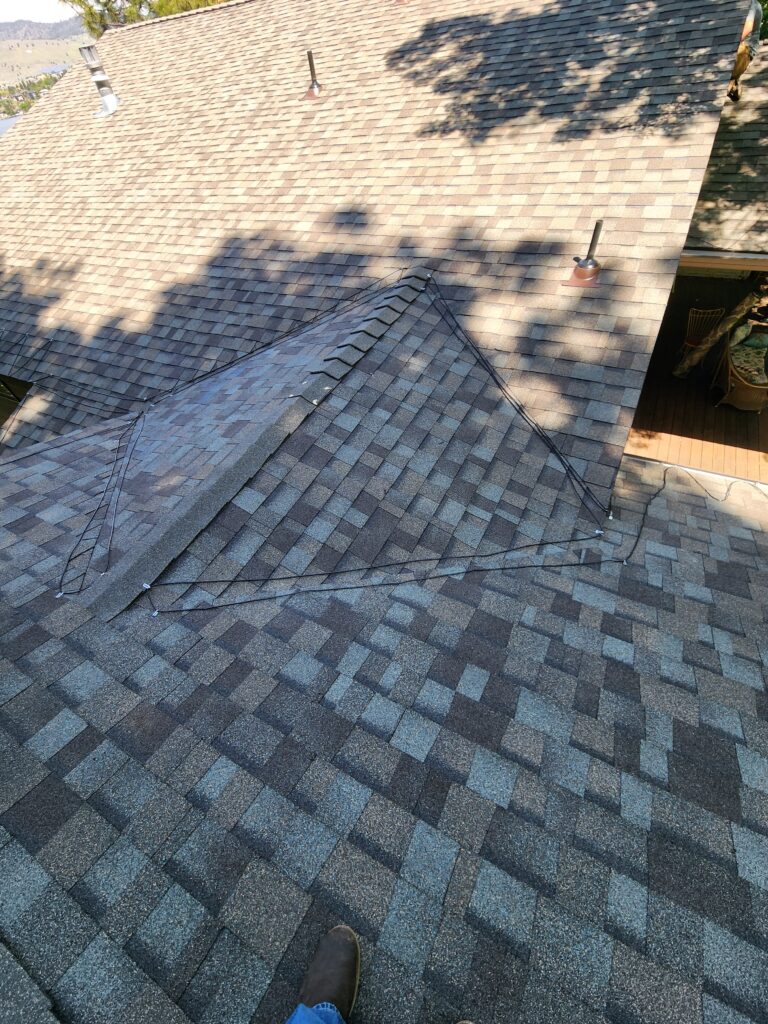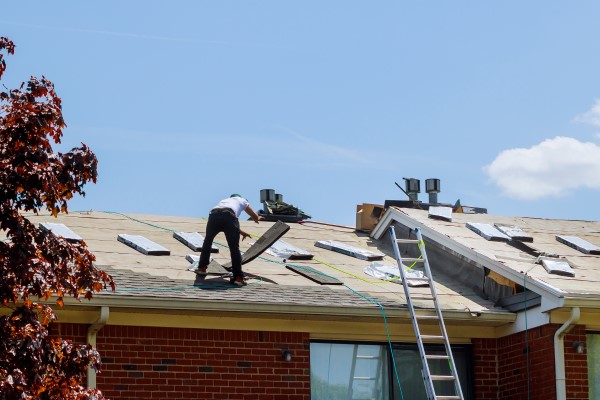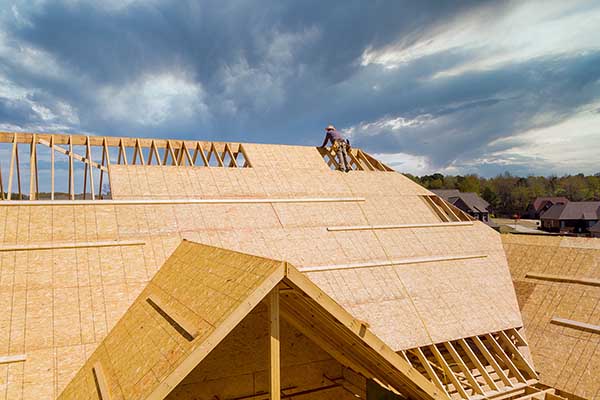Is Oregon's Climate Better Suited for Metal Roofing or Shingle Roofing?
Wright's Roofing & Construction, Inc.
Locally Owned • Free Estimates • 24/7 Emergency Service
Free Estimates
Understanding Oregon’s Climate and Its Impact on Roofing
Choosing the right roofing material for your home in Oregon is a big decision, especially given the region’s unique climate. Both metal and shingle roofing offer distinct benefits and challenges that are worth exploring to determine which best suits your needs, preferences, and budget.
Klamath Falls experiences a range of weather conditions that can impact the longevity and performance of your roof. Here are the key climate factors to consider for your roof replacement in Klamath Falls, OR:
Temperature Extremes:
- Summer Heat: Causes roofing materials to expand.
- Winter Cold: Leads to contraction and potential wear over time.
Snowfall and Precipitation:
- Heavy Snowfall: Increases the risk of ice dams and moisture penetration.
- Rain: Raises concerns about mold, mildew, and overall moisture resistance.
High Winds:
- The region occasionally experiences strong winds, requiring a roofing material that can withstand these forces without significant damage.
Given these climate factors, the choice between metal and shingle roofing is crucial for ensuring long-term durability and minimizing maintenance.
Metal Roofing: Pros and Cons
Metal roofs can last 40-70 years, making them a long-term investment, particularly beneficial in regions with extreme weather conditions. Metal roofing excels in shedding snow, preventing the buildup that can lead to ice dams and leaks. It also offers strong resistance to high winds.
Metal roofs reflect solar heat, which can help reduce cooling costs during the summer months. Often made from recycled materials, metal roofs are fully recyclable at the end of their lifespan, making them a sustainable choice. Metal is non-combustible, providing added safety in wildfire-prone areas.
Cons of Metal Roofing:
- Higher Initial Cost: Metal roofing typically has a higher upfront cost compared to shingles.
- Noise: Without proper insulation, metal roofs can be noisy during rain or hailstorms.
- Aesthetics: The modern, industrial look of metal roofing may not suit all home designs.
- Thermal Expansion: Metal roofs expand and contract with temperature changes, which can affect fasteners and cause potential issues if not properly installed.

Shingle Roofing: Pros and Cons
Pros of Shingle Roofing:
Shingles are generally a less expensive roof replacement in Klamath Falls, OR than metal, making them a practical option for those on a budget. Shingles come in a wide range of colors, styles, and textures, allowing homeowners to choose a design that complements their home’s architecture.
Klamath Falls Roof Replacement Owens Corning Duration Driftwood 30 Year Shingles 6
Cons of Shingle Roofing:
- Shorter Lifespan: Shingle roofs generally last between 20 to 30 years, which is shorter compared to metal roofs.
- Higher Maintenance: Shingle roofs require regular maintenance, particularly after severe weather events, to prevent issues like algae, mold, and mildew.
- Wind Vulnerability: High winds can lift shingles, leading to potential damage and the need for costly repairs.
- Environmental Impact: Shingles are generally not recyclable, contributing to landfill waste after their lifespan ends.
Metal vs. Shingle Roof Replacement in Klamath Falls, OR
When deciding between metal and shingle roofing for your home, it’s essential to consider how each material performs under the specific weather conditions typical of the region. Both options have their strengths and weaknesses, and the best choice often depends on your priorities—whether they be longevity, cost, aesthetic appeal, or environmental impact.
Durability and Lifespan
Metal Roofing:
- Longevity: One of the most compelling reasons to choose metal roofing is its exceptional durability. A metal roof, with proper maintenance, can last between 40 to 70 years. This longevity can be a great advantage for roof replacement in Klamath Falls, where the weather can be harsh and unpredictable. A long-lasting roof means fewer replacements over time, which can save you money in the long run.
- Resistance to Elements: Metal roofs are highly resistant to weather-related damage, including heavy snowfall, rain, and wind. The ability of metal to shed snow quickly reduces the risk of ice dams, which are a common concern in colder climates.
Shingle Roofing:
Shingle roofing, while less durable than metal, still offers a respectable lifespan of 20 to 30 years. However, this lifespan can be significantly reduced by extreme weather conditions, which can lead to the need for more frequent repairs or replacements.
Shingles are more susceptible to damage from high winds, which can cause them to lift or tear. Additionally, shingles can be prone to moisture damage, leading to issues such as mold, mildew, and algae growth.
Conclusion: If longevity and weather resistance are your top priorities, metal roofing is the superior choice. However, if you are looking for a more budget-friendly option with adequate durability, shingles may still be a viable option.

Wrights Roofing & Construction, Inc.
Provided me with what I needed to cover my roof when it started leaking in multiple areas till I can get it fixed. They where there for me when no one else was. I recommend them 100% they great people who have a heart.
-Shaina B.
Cost Considerations
Metal Roofing:
- Upfront Costs: The initial cost of installing a metal roof is generally higher than that of a shingle roof. This higher cost can be a significant factor for homeowners working with a tight budget. However, it’s important to consider the long-term savings that metal roofing can offer.
- Long-Term Savings: Metal roofs require less maintenance and are less likely to need repairs over time, which can offset the higher initial investment. Additionally, the energy efficiency of metal roofing can lead to lower cooling costs, further contributing to long-term savings.
Shingle Roofing:
- Upfront Costs: Shingle roofs are less expensive to install than metal roofs, making them a popular choice for homeowners looking to minimize upfront expenses. This cost-effectiveness is one of the main reasons shingles remain a common roofing material.
- Long-Term Costs: While the initial cost is lower, shingle roofs may require more frequent repairs and maintenance, particularly in areas with harsh weather. Over time, these ongoing costs can add up, potentially making shingles more expensive in the long run.

Conclusion: Metal roofing represents a higher upfront investment but offers long-term savings through durability and energy efficiency. Shingle roofing is more budget-friendly initially but may lead to higher costs over time due to maintenance and repairs.
Aesthetic Appeal and Customization
Metal Roofing:
Metal roofing has a distinctive look that is often associated with modern or industrial design. While it may not suit every home style, metal roofing can be an attractive option for those looking to achieve a sleek, contemporary appearance.
While metal roofing offers fewer color and style options compared to shingles, it is available in various finishes and profiles. For example, some metal roofs can mimic the look of traditional shingles or tiles, providing homeowners with more flexibility in design.
Shingle Roofing:
- Aesthetics: Shingle roofing is highly versatile in terms of design, offering a wide range of colors, textures, and styles. This variety makes it easier for homeowners to find a shingle option that complements their home’s architecture and personal style.
- Customization Options: The extensive selection of shingle styles allows for greater customization, making it possible to achieve anything from a classic, traditional look to a more unique and personalized appearance.
Conclusion: If aesthetic flexibility and a wide range of design options are important to you, shingle roofing offers more customization. However, if you prefer a modern, sleek appearance and are open to fewer style options, metal roofing may be the better choice.
Environmental Impact
Metal Roofing:
- Sustainability: Metal roofing is often made from recycled materials and is fully recyclable at the end of its life. This makes it a more environmentally friendly option compared to many other roofing materials.
- Energy Efficiency: The reflective properties of metal roofing help reduce the amount of heat absorbed by your home, leading to lower energy consumption for cooling in the summer months.
Shingle Roofing:
- Environmental Considerations: Shingle roofing is generally less environmentally friendly than metal roofing. Most shingles are not recyclable and end up in landfills after their useful life. Additionally, the production of asphalt shingles can be energy-intensive and generate significant waste.
- Energy Efficiency: While some shingles are designed with reflective properties to improve energy efficiency, they generally do not offer the same level of energy savings as metal roofing.
Conclusion: For homeowners concerned with sustainability and energy efficiency, metal roofing is the greener option. Shingles, while still a common choice, have a more significant environmental impact due to their limited recyclability and energy-intensive production.
Which Material Should You Choose?
The best choice for your roof depends on what you value most—whether it’s longevity, cost, design, or environmental impact. There’s no universal answer, so it’s essential to weigh these factors against your specific needs and goals.
At Wright’s Roofing & Construction, Inc., we’re here to help you navigate the decision-making process. Whether you’re considering metal or shingle roofing, our experienced team can provide the guidance you need. Contact us today for a free consultation and let us assist you in choosing the perfect roof to protect your home for years to come.
Wright's Roofing & Construction, Inc.
Locally Owned
Licensed, Bonded, Insured
Extended Warranties*
24/7 Emergency Service
Free Estimates
Klamath Falls, OR Top Roofing Contractor

